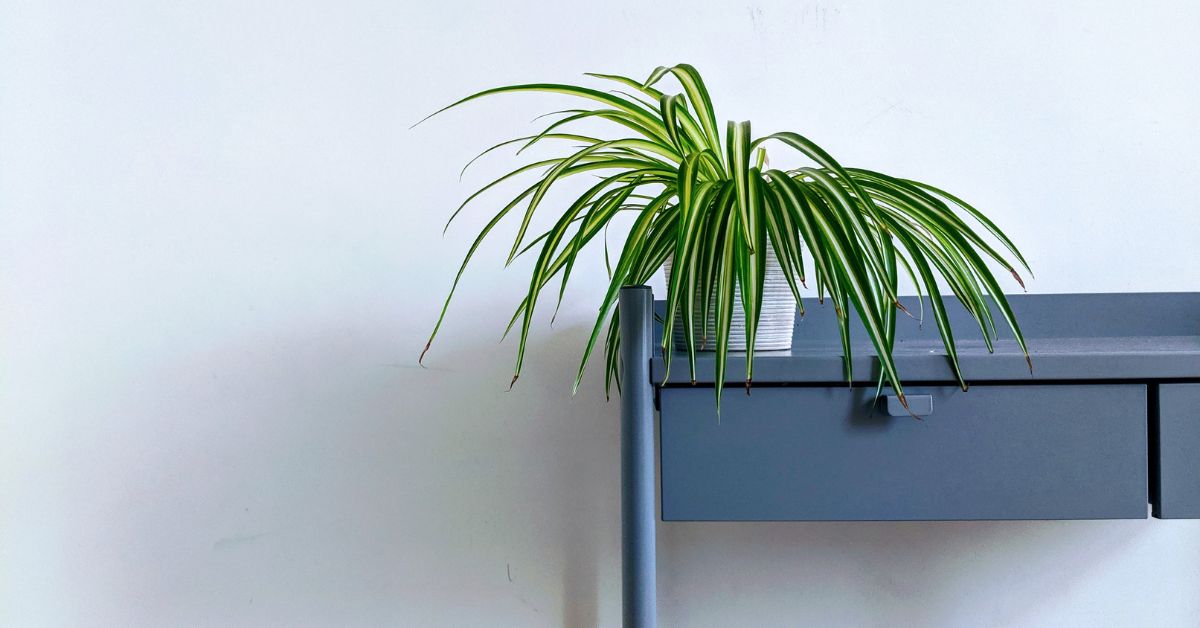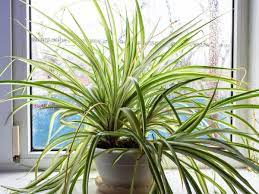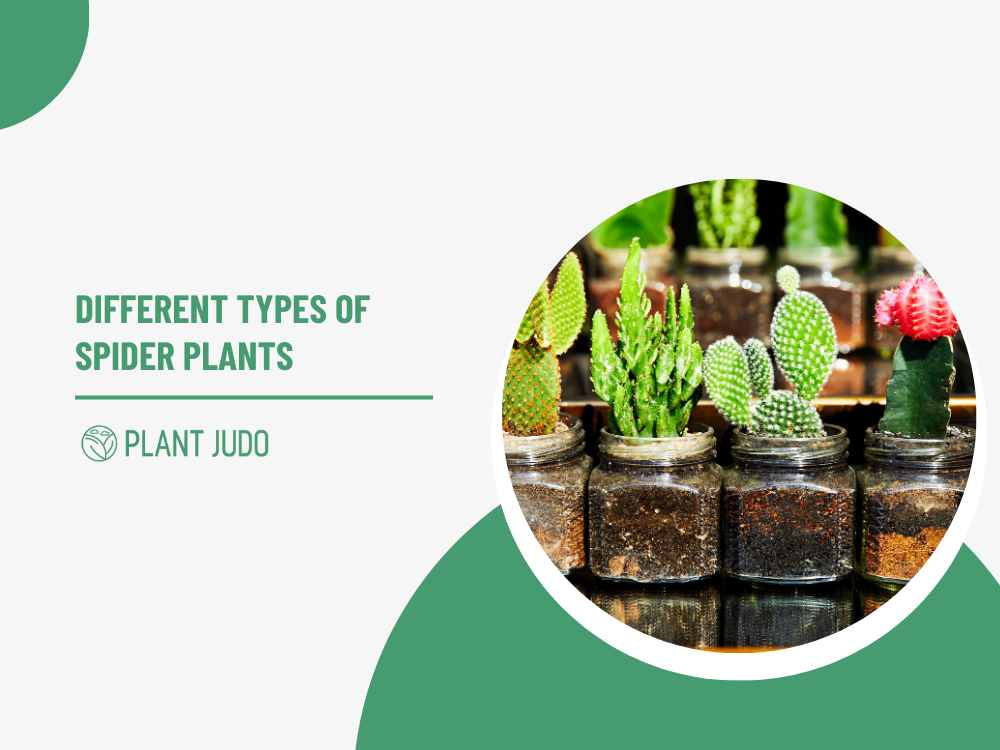Chrorophytum comosum (spider plants) comes in over 200 varieties, but you can narrow them down into two categories: variegated and non-variegated. Leaf colour and stripes are the significant differences between them. You might choose one spider plant over another based on where you want to place it.
Spider plants, consisting of various species, include bonnie, zebra, Hawaiian, capense, bichetii, reverse, and variegated spider plants. There are three types of spider plants: curly, variegated, and non-variegated.
Providing 90% of airborne toxins are removed by spider plants, NASA has confirmed this. You should get at least a few varieties for your home. Below you’ll find a list of some of the most common types of spider plants and pictures to make your choice as easy as possible.

Categories of Spider Plants
Spider plants may carry the same name, but this does not imply the same. There are many varieties of spider plants. These plants have only one thing in common: their pups are shaped like spiders, thus their name.
Rainforests in South Africa are home to a variety of spider plants. Each of them requires the same care and produces offspring. The main difference is the way they look.
There are three distinct categories of spider plants:
Green (non-variegated) spider plants
Shamrock is another name for it. There aren’t many nurseries out there that have the solid green type. It might be necessary to order it from an online store that sells spider plants.
Variegated spider plants
Most people prefer variegated varieties. Many don’t know about the other varieties. Even though they are the easiest to find of the three, variegated spider plants can be pretty eye-catching, particularly if they have a lot of offshoots.
Curly spider plants
Variegated plants take much from the curly type. Except for the curled leaves, the variegated spider plant looks precisely like the variegated spider plant. In addition, its offspring are curled as well.
Spider plants of this type are rare and therefore difficult to find. Spider plants aren’t readily available at local nurseries.
Types of Spider Plants – 7 Different Varieties
Within the tropical rainforest of South Africa and worldwide, there are around 200 different types of spider plants. Despite this, we have only brought a few of them into our homes. Check out this list for some examples.
Reverse spider plant
Chlorophytum Comosum ‘Reverse Variegatum’ also goes by reverse spider plant. As the name suggests, the outline and centre of the leaves of this plant are the polar opposite of its variegated counterpart. As the name implies, the edges are yellow while the centres are green. You can add a great deal of variety to your garden with this spider plant, which can reach great heights. It is for this reason that gardeners are so fond of them.
Chlorophytum capense
A member of the spider plant family, chlorophytum capense is also known as the bracket plant. Its leaves are solid green and have a white edge, making it unique from the rest because it doesn’t produce hanging offspring.
As with other species, the flowers may look similar. Chlorophytum Capense, on the other hand, produces flowers that grow straight up instead of hanging.

Chlorophytum Bichetii
This non-flowering chlorophytum species is known as Chlorophytum Bichetii. There are no spiderettes on these plants. In addition to being used as a hanging plant, it is ideal for ground cover. This type requires the same kind of maintenance as others.
Zebra spider plant (Chlorophytum laxum)
The zebra plant leaves are brighter than those of the reverse variegatum. A spider plant of this type doesn’t grow as tall as a spider plant of another species. The plant is relatively wide instead.
You may find it difficult to find this variety in any nurseries in the area. In addition, you might need to search online where to find one. Due to its rarity, it is hard to find.
Variegated spider plant
Chlorophytum Comosum Vittatum is the most common type of perennial spider plant. Spider plants of this type have slightly curled leaves, green, and have cream and broad stripes running along with them. Their size ranges from 1-to 2 feet.
Light shade and well-drained soil are ideal conditions for this lovely drought-tolerant hanging plant. You can easily let your spider plant become yellow and droop if you overwater it.
Bonnie spider plant (Chlorophytum comosum)
The fourth plant on our list is the beautiful bonnie plant, with curled leaves and offspring. Bonnie spider plants and variegated spider plants are similar in their curly leaves.
Having long, curled, brighter leaves makes the bonnie spider plant more expensive. Many people find it suitable for small balconies and smaller rooms.
Among the most impressive aspects of it are the beautiful yellow flowers. Your room looks fantastic with them. There aren’t many spider plant varieties like this type around compared to other types. However, its scarcity has been managed by making use of the bonnie plant cutting.
Hawaiian spider plant (Chlorophytum viridescens ‘Hawaiian’)
Hawaiian Spider plants, also known as Golden Glows, are simply stunning and give your room an added pop of colour with their glossy green leaves. The small size of this variety won’t take up a lot of space.
Moist soil with excellent drainage is best for the Hawaiian spider plant, which also does well in partial shade. It requires sufficient lighting, however. It should be grown at a pace of 6-12 inches.
Conclusion

Spider plants are usually able to adapt to any climate and will provide the greenery appearance you require. They also require very little maintenance, so you don’t have to worry about them. You might want to give the spider plants a shot if you are a fan of houseplants or window plants.
Because of their ease of cultivation, spider plants have survived the test of time. Check out how to take good care of spider plants if you plan to get some for your home.


